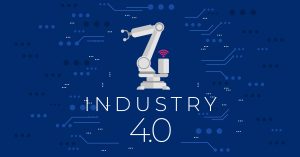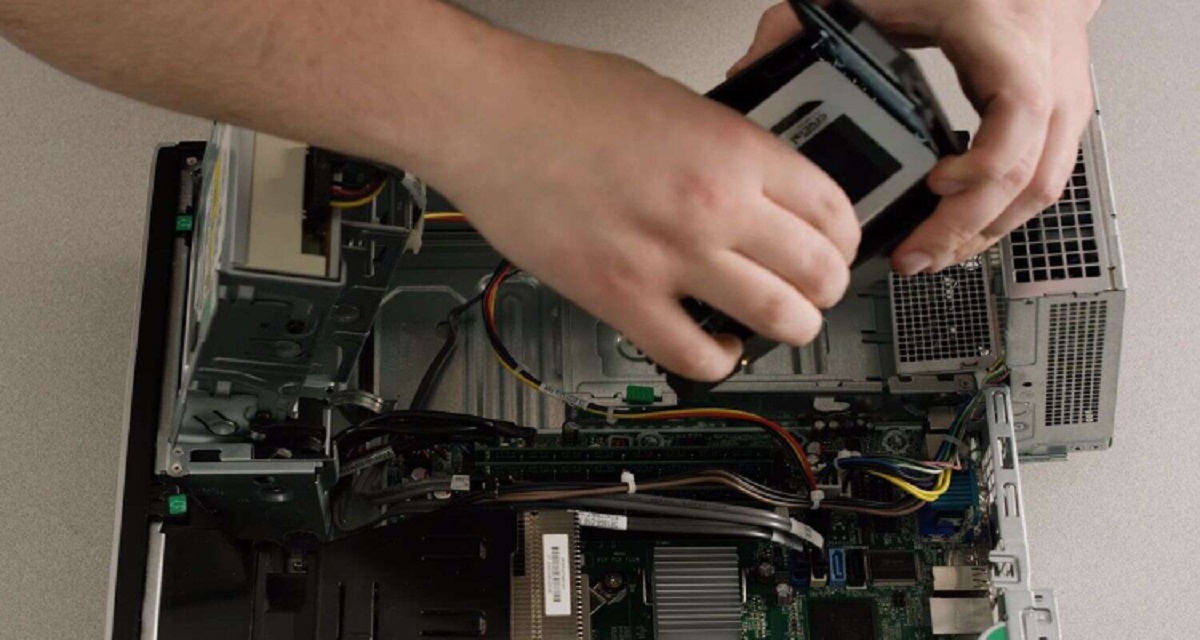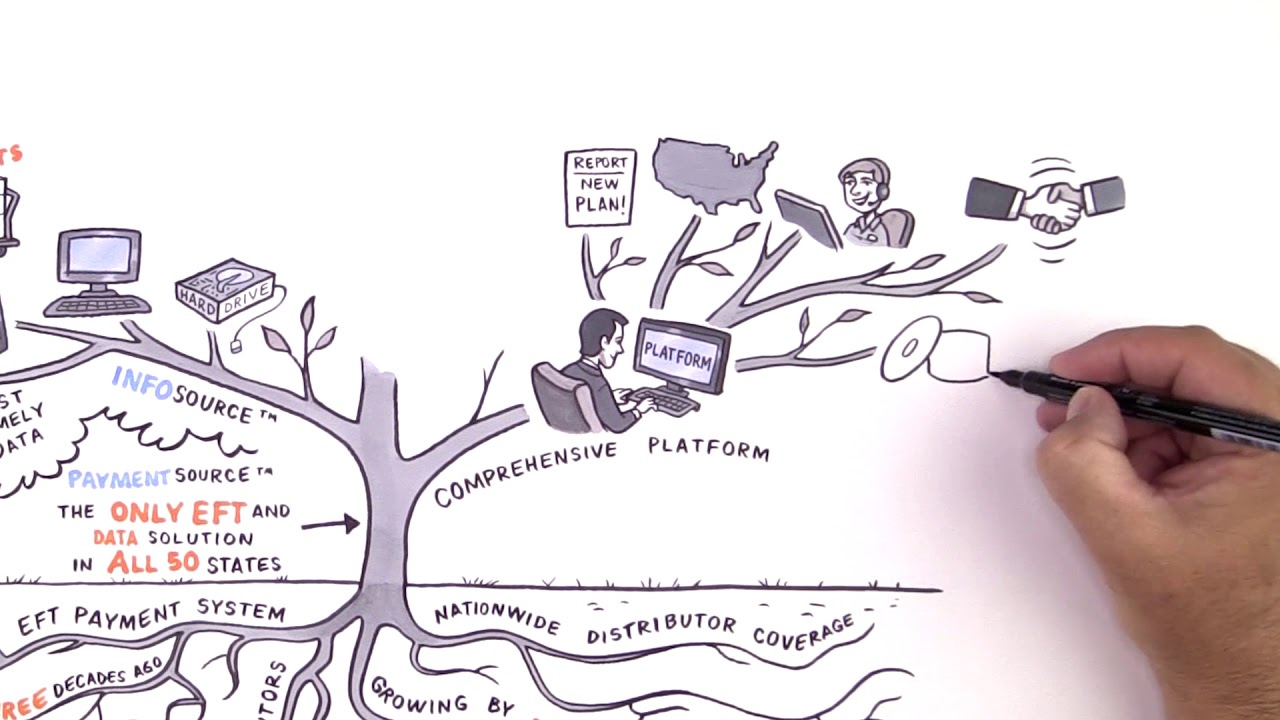Introduction
Welcome to the world of banking, where efficiency and accuracy are paramount. The banking industry has always been at the forefront of adopting technological advancements to streamline its operations and enhance customer experience. From online banking to mobile payment solutions, banks have continuously pursued innovative ways to stay ahead in the digital age.
One such innovation that is revolutionizing the banking sector is Robotic Process Automation (RPA). RPA is a cutting-edge technology that leverages software robots to automate repetitive tasks, improve operational efficiency, and reduce costs. These robots mimic human actions and interact with existing systems to perform various tasks, such as data entry, document processing, account reconciliation, and regulatory compliance.
In recent years, banks have embraced RPA with open arms to address operational challenges, enhance productivity, and foster a seamless digital transformation. By utilizing RPA, banks can achieve greater accuracy, faster throughput times, improved compliance, cost savings, and ultimately, an enhanced customer experience.
In this article, we will delve into the world of RPA in banking, exploring its benefits, common use cases, implementation challenges, and the future outlook. So, let’s dive in and discover how RPA is reshaping the banking landscape.
What is RPA?
Robotic Process Automation (RPA) is a technology that utilizes software robots or “bots” to automate repetitive and rule-based tasks within an organization. These bots are capable of mimicking human interactions with computer systems, applications, and databases, enabling them to perform tasks that were previously done manually.
RPA works by creating a virtual workforce that can handle a wide range of tasks, including data entry, data extraction, form-filling, report generation, and more. The bots interact with various systems and applications, such as customer relationship management (CRM) systems, enterprise resource planning (ERP) systems, and banking platforms, to execute these tasks seamlessly and efficiently.
One of the key benefits of RPA is its ability to work across different systems and applications, regardless of their underlying technology. This makes it a versatile tool for streamlining and automating processes within the banking industry, where a wide variety of systems and applications are used.
RPA software is designed to be intuitive and user-friendly, allowing business users to easily configure and deploy bots without the need for extensive programming knowledge. The software typically includes a visual interface that enables users to define the steps of a process, set rules and conditions, and specify data inputs and outputs.
By automating repetitive tasks, RPA frees up valuable time for bank employees, enabling them to focus on higher-value activities that require human judgment and expertise. This not only increases operational efficiency but also leads to improved productivity and employee satisfaction.
Furthermore, RPA offers a high level of accuracy and compliance since the robots perform tasks exactly as programmed, without making errors or deviations. This is particularly important in the banking sector, where precision and adherence to regulations are critical.
In the next sections, we will explore the specific benefits of RPA in banking, along with common use cases and real-world examples of how banks are implementing this transformative technology.
Benefits of RPA in Banking
Robotic Process Automation (RPA) brings numerous benefits to the banking industry, revolutionizing the way banks operate and interact with their customers. Let’s explore some of the key advantages of implementing RPA in banking.
1. Enhanced Operational Efficiency: By automating mundane and repetitive tasks, RPA improves operational efficiency within banks. Processes such as customer onboarding, loan application processing, and account reconciliation can be completed in a fraction of the time it would take with manual labor. This leads to faster transaction processing, reduced human errors, and increased overall productivity.
2. Cost Savings: With RPA, banks can significantly reduce costs by automating tasks that would otherwise require a large workforce. By eliminating manual labor, banks can allocate resources more efficiently and achieve cost savings in the long run. This allows them to redirect their investments towards strategic initiatives and customer-focused activities.
3. Improved Accuracy and Compliance: RPA ensures a high level of accuracy in executing tasks, minimizing errors and reducing the need for manual intervention. This is particularly crucial in the banking industry where accuracy and compliance are paramount. By following predefined rules and regulations, RPA helps banks maintain regulatory compliance consistently, reducing the risk of penalties and improving overall data accuracy.
4. Enhanced Customer Experience: RPA enables banks to provide customers with a seamless and frictionless experience. By automating processes like account opening, mortgage applications, and fund transfers, banks can significantly reduce processing times, eliminating the need for customers to wait for manual approvals. This improves customer satisfaction, fosters loyalty, and enhances the overall banking experience.
5. Scalability and Flexibility: RPA allows banks to scale their operations efficiently and adapt to changing business needs. As the volume of transactions and customer demands increase, RPA can easily handle the additional workload without requiring additional resources. RPA also provides the flexibility to make quick changes or updates to process flows, allowing banks to stay agile in a dynamic market environment.
6. Data Analytics and Insights: RPA can play a crucial role in extracting and analyzing data from different sources. By automating data gathering and analysis tasks, banks can gain valuable insights into customer behavior, market trends, and risk assessment. These insights help banks make more informed decisions, tailor their services, and drive business growth.
RPA is transforming the banking industry by streamlining operations, reducing costs, improving accuracy, enhancing customer experience, and enabling banks to stay competitive in a rapidly evolving landscape. In the next section, we will explore some common use cases of RPA in banking.
Common RPA Use Cases in Banking
Robotic Process Automation (RPA) offers a wide range of applications in the banking sector. Let’s explore some of the common use cases where RPA has proven to be beneficial.
1. Account Opening and KYC: RPA can automate the account opening process by extracting customer data from various sources, performing background checks, and populating the necessary forms. This speeds up the onboarding process and ensures compliance with Know Your Customer (KYC) regulations.
2. Loan Origination and Processing: RPA can streamline loan origination by automating data collection, document verification, and calculation of eligibility criteria. It can also integrate with credit scoring systems and perform risk assessments, reducing the time and effort required for loan processing.
3. Payment Processing: RPA can automate payment and transaction processing, including payment reconciliation, fraud detection, and exception handling. By integrating with third-party payment gateways and internal systems, RPA accelerates the payment process, improves accuracy, and enhances compliance.
4. Report Generation and Compliance: RPA can automate the generation of reports, such as daily transaction reports, regulatory reports, and financial statements. By extracting data from multiple sources, performing calculations, and generating accurate reports, RPA improves efficiency and compliance with regulatory requirements.
5. Account Reconciliation: RPA can automate the reconciliation of accounts, matching transactions, identifying discrepancies, and generating reconciliation reports. This eliminates manual efforts, reduces errors, and ensures accurate and timely account reconciliation.
6. Customer Service and Support: RPA can enhance customer service by automating responses to frequently asked questions, routing service requests to the appropriate department, and updating customer records in real-time. This reduces response times, improves customer satisfaction, and allows employees to focus on more complex customer inquiries.
7. Fraud Detection and Risk Management: RPA can play a significant role in fraud detection and risk management by monitoring transactions in real-time, analyzing patterns, and flagging suspicious activities. This helps banks detect and prevent fraudulent transactions, ensuring the security of customer accounts.
8. Back-Office Processes: RPA can be utilized for various back-office functions, including data entry, data validation, account maintenance, and document processing. By automating these tasks, RPA frees up resources, reduces costs, and improves operational efficiency.
These are just a few examples of how RPA is transforming banking operations. The versatility and adaptability of RPA make it a valuable tool for improving processes, reducing costs, and enhancing the overall banking experience.
Case Study: How XYZ Bank Implemented RPA
Let’s take a closer look at a real-world example of how XYZ Bank successfully implemented Robotic Process Automation (RPA) to streamline their operations and drive efficiency.
XYZ Bank, a large multinational banking institution, faced numerous challenges in their loan origination process. The manual processing of loan applications, data verification, and eligibility assessments resulted in high operational costs, lengthy processing times, and a higher risk of errors. To address these issues, XYZ Bank decided to implement RPA.
First, XYZ Bank identified the key pain points in their loan origination process and conducted a comprehensive analysis to determine the optimal areas for automation. They recognized that repetitive tasks such as data collection, document verification, and eligibility calculations could be automated using RPA.
The bank collaborated with a trusted RPA service provider to design and develop the automation solution. The RPA software was integrated with XYZ Bank’s existing loan origination system, allowing seamless interaction between the bots and the system’s interfaces.
The RPA bots were programmed to extract customer data from various sources, perform background checks, validate documents, and calculate eligibility criteria as per the bank’s defined rules. The bots also updated customer records, generated reports, and sent status notifications to both customers and bank employees throughout the loan application process.
After a successful pilot implementation, XYZ Bank launched the RPA solution on a larger scale. The benefits of RPA were quickly evident. The loan origination process became significantly faster, with applications processed in a fraction of the time it previously took. The automation also led to a substantial reduction in errors, as the bots executed tasks with high accuracy and adherence to the bank’s defined rules.
Moreover, RPA enabled XYZ Bank to redeploy bank employees to more complex and value-added tasks, such as providing personalized customer support and conducting in-depth risk assessments. This resulted in improved employee satisfaction and a more efficient allocation of resources.
With the successful implementation of RPA in loan origination, XYZ Bank expanded its use of RPA to other areas, including customer onboarding, payment processing, and data analytics. This further enhanced operational efficiency, reduced costs, improved compliance, and provided a superior customer experience.
The implementation of RPA transformed XYZ Bank’s loan origination process, allowing them to stay competitive in the industry while meeting the increasing demands of their customers. This case study serves as a testament to how RPA can drive significant improvements in banking operations.
Challenges and Considerations for RPA Implementation in Banking
While Robotic Process Automation (RPA) brings numerous benefits to the banking industry, it is essential to be aware of the challenges and considerations associated with its implementation. Let’s explore some of the key challenges and considerations for adopting RPA in banking.
1. Complex Legacy Systems: Many banks operate on intricate legacy systems that may not be easily compatible with RPA technology. Integrating RPA bots with these systems can be challenging, requiring careful planning and collaboration between the IT department and the RPA implementation team.
2. Data Security and Privacy: Banks deal with highly sensitive customer data, making data security and privacy crucial considerations. It is essential to ensure that RPA implementation complies with stringent security protocols, such as data encryption, access controls, and compliance with regulatory requirements like GDPR and PCI-DSS.
3. Process Standardization: Before implementing RPA, banks need to thoroughly analyze and standardize their processes to enable automation. This may involve simplifying complex workflows, defining clear rules and guidelines, and ensuring consistent data formats across systems. Standardization efforts may require additional time and resources upfront but are essential for successful RPA implementation.
4. Employee Resistance and Change Management: Introducing RPA into banking operations can lead to concerns among employees about job security and displacement. It is crucial to address employee concerns early in the implementation process and provide them with training and support to adapt to the changing work environment. Proper change management strategies and effective communication can help alleviate employee resistance and ensure a smooth transition.
5. Scalability and Maintenance: As RPA expands within the banking organization, managing a growing number of bots and maintaining their performance can become challenging. Banks need to have a clear strategy for scaling RPA initiatives, managing bot deployments, and handling maintenance and updates. This includes regular monitoring, bot performance optimization, and addressing any technical issues promptly.
6. Regulatory Compliance: Banks operate under strict regulatory frameworks, and any process automation must comply with these regulations. It is crucial to ensure that the RPA implementation aligns with the regulatory requirements governing the banking industry. This may involve conducting thorough audits and assessments to demonstrate compliance and keep abreast of any regulatory changes that may impact RPA operations.
7. Continuous Improvement: RPA implementation is not a one-time process but an ongoing journey. Banks need to be proactive in identifying areas for continuous improvement, optimizing processes, and exploring new use cases for RPA. Regular monitoring, analysis of performance metrics, and feedback from employees and customers are essential to drive further enhancements and capitalize on the full potential of RPA.
By carefully addressing these challenges and considerations, banks can successfully implement RPA and harness its benefits while ensuring a smooth and efficient transformation of their operations.
Future Outlook: How RPA is Transforming Banking Operations
The future of banking operations is set to be transformed by Robotic Process Automation (RPA). As technology continues to advance and banks increasingly embrace digital transformation, RPA is poised to play a vital role in driving operational efficiency, enhancing customer experience, and improving overall profitability. Let’s explore some key aspects of the future outlook for RPA in banking.
1. Intelligent Automation: RPA is evolving beyond simple rule-based tasks to incorporate elements of artificial intelligence (AI) and machine learning. The integration of cognitive capabilities allows RPA bots to analyze data, make intelligent decisions, and adapt to changing circumstances. This level of automation enables banks to handle more complex processes, such as fraud detection, risk assessment, and personalized customer interactions.
2. Hyperautomation: Hyperautomation, which represents the convergence of multiple automation technologies, is set to become a prominent trend in banking. RPA will be combined with AI, machine learning, natural language processing, and other automation tools to create end-to-end automation solutions. This will enable banks to automate entire workflows, resulting in seamless, integrated, and highly efficient processes.
3. Process Mining and Optimization: RPA can work in tandem with process mining tools to identify inefficiencies and bottlenecks within banking processes. By analyzing the real-time data captured by RPA bots, banks can gain valuable insights into process performance, identify areas for improvement, and optimize their operations. This will lead to enhanced efficiency, reduced costs, and improved customer satisfaction.
4. Virtual Workforce Augmentation: As banks continue to face increasing demands, RPA will augment the existing workforce, enabling employees to focus on more strategic and value-added activities. RPA bots will handle repetitive and time-consuming tasks, freeing up employees to engage in customer interaction, innovation, and complex decision-making processes. This combination of human expertise and digital workforce will result in improved productivity and higher levels of customer service.
5. Regulatory Compliance and Audit: RPA offers significant advantages in terms of regulatory compliance and audit management. By automating compliance checks, data validation, and reporting processes, banks can ensure consistent adherence to regulatory requirements. The accuracy and reliability of RPA bots in data handling also facilitate more efficient and accurate audits, reducing the risk of compliance issues and penalties.
6. Enhanced Customer Experience: RPA will continue to play a pivotal role in delivering a seamless and personalized customer experience in banking. By automating customer onboarding, inquiries, and transaction processing, banks can provide faster response times, minimize errors, and offer more tailored services. This will result in increased customer satisfaction, loyalty, and ultimately, stronger customer relationships for banks.
The future outlook for RPA in banking is promising. As technology advances and banks continue to embrace automation, RPA will provide an invaluable tool for driving operational excellence and meeting the evolving needs of the modern banking environment.
Conclusion
Robotic Process Automation (RPA) is revolutionizing the banking industry by streamlining operations, improving efficiency, reducing costs, and enhancing the overall customer experience. Through the automation of repetitive and rule-based tasks, RPA enables banks to allocate their resources more strategically and focus on high-value activities that require human expertise.
In this article, we explored the concept of RPA and its numerous benefits in banking. We discussed how RPA enhances operational efficiency, reduces costs, ensures accuracy and compliance, and fosters scalability and flexibility. We also examined common use cases of RPA in banking, highlighting its applications in account opening, payment processing, customer service, and risk management.
Furthermore, we delved into a real-world case study of how XYZ Bank successfully implemented RPA to improve their loan origination process. We also discussed the challenges and considerations associated with RPA implementation in banking, such as legacy system integration, data security, employee resistance, and regulatory compliance.
Looking towards the future, RPA is set to transform banking operations even further. With intelligent automation, hyperautomation, and enhanced customer experience, RPA will continue to drive innovation and operational excellence in the banking industry.
In conclusion,
RPA is revolutionizing the banking industry by streamlining operations, enhancing efficiency, reducing costs, and improving customer satisfaction. As banks continue on their digital transformation journey, embracing RPA will be key to gaining a competitive edge in the market.
By carefully implementing and leveraging RPA technology, banks can unlock the full potential of automation, driving significant improvements in productivity, accuracy, and compliance. The future looks promising for RPA in banking, as it continues to evolve with advancements in AI, machine learning, and process optimization.
As banking operations continue to evolve, RPA will remain a vital tool for banks to adapt to changing customer demands, regulatory requirements, and market dynamics. It is an exciting time for the banking industry, as RPA paves the way for a more efficient, responsive, and customer-centric banking ecosystem.

























